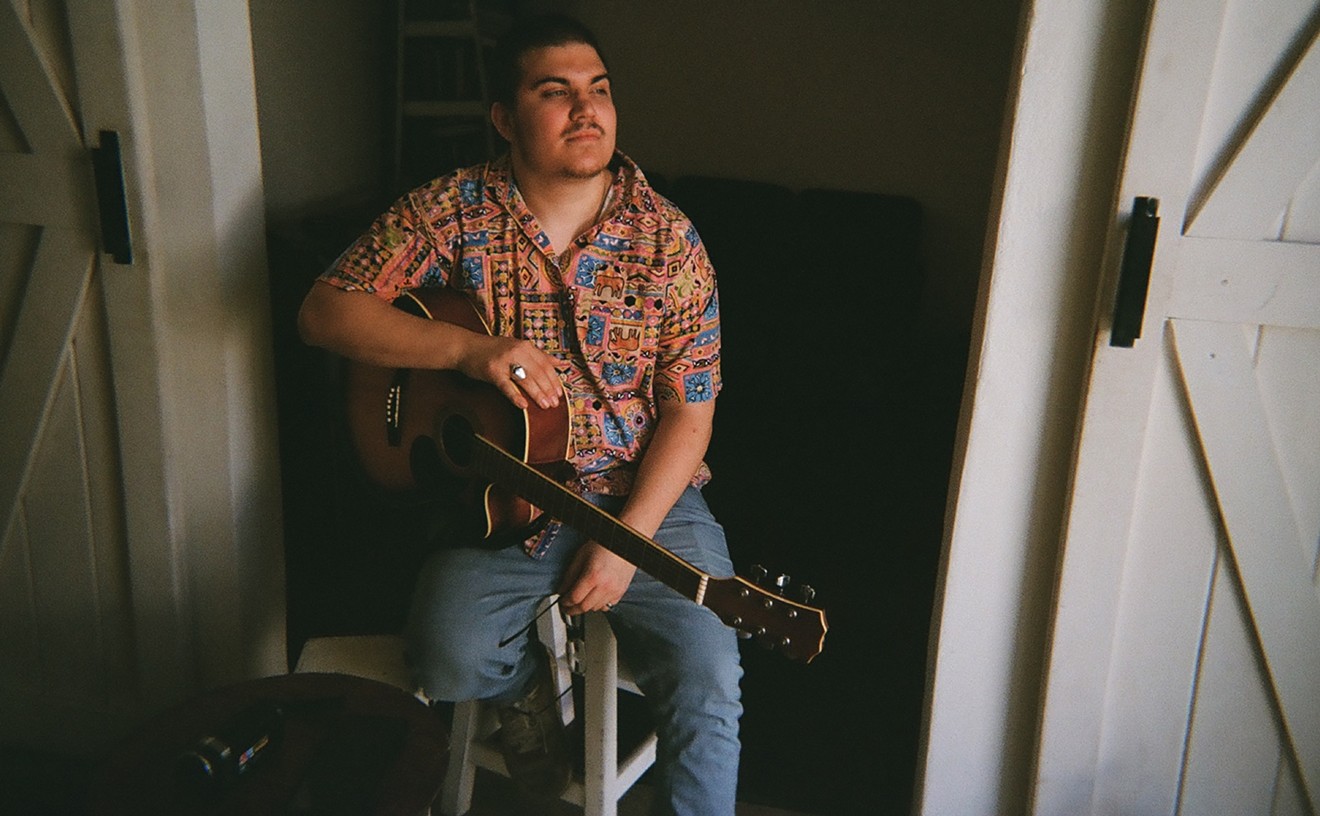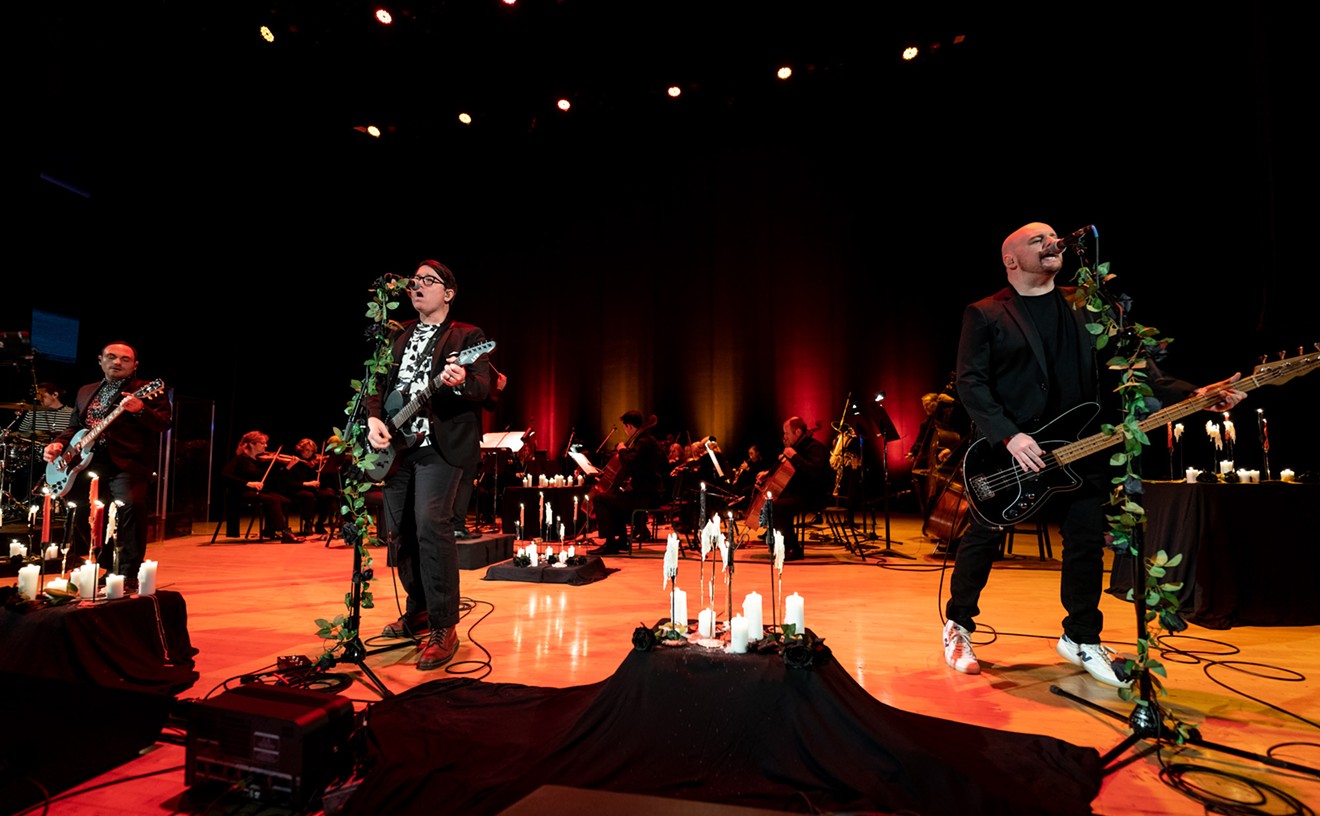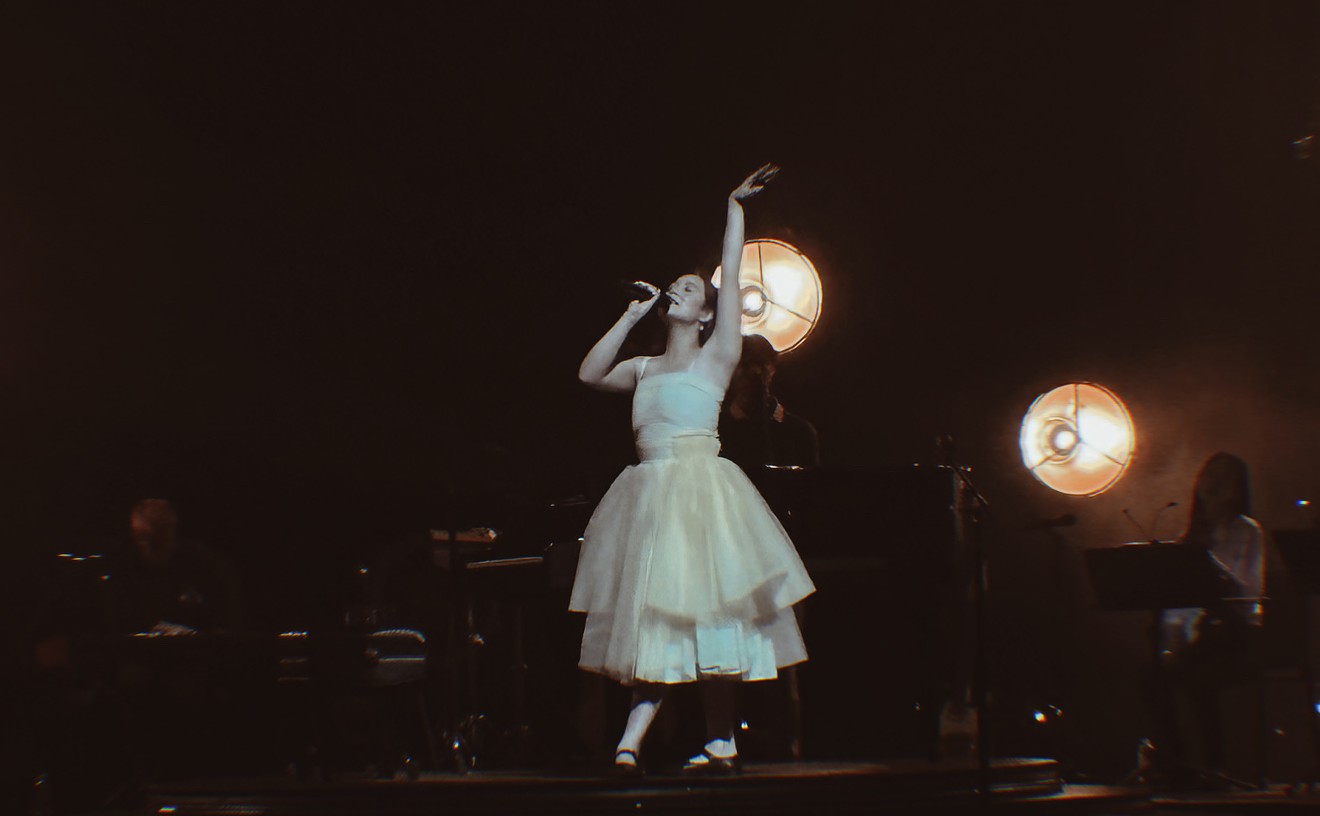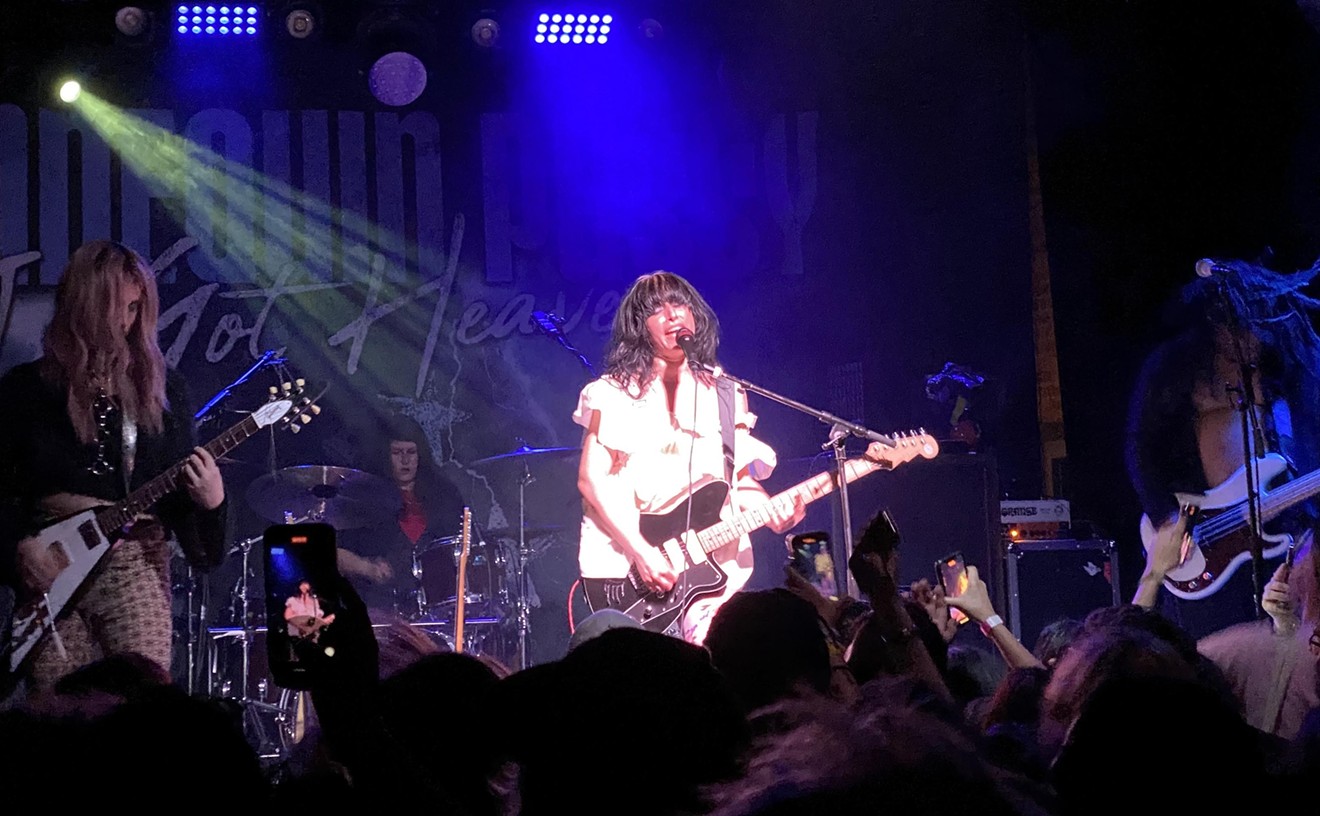It was the spring of 1978 and rock music was in big trouble.
The Village People’s “YMCA” was sharing space on the Billboard charts with the Bee Gees and Andy Gibb. The Rolling Stones had (gasp!) gone disco with their single “Miss You,” and Styx was encouraging us to come sail away in their twisted tsunami of spandex and hairspray.
At the same time -- and still very much under the radar, mind you -- weird stories about bizarre new punk rock bands like The Clash, Sex Pistols and The Ramones were starting to show up in magazines like Creem and Circus.
As the proud adolescent owner of a beat-up old Gibson SG guitar, I was ready to make some noise and take on the world. The only problem was that all of my heroes had either shamelessly sold out, or settled into a comfortable heroin hibernation. Led Zeppelin had lost their swagger, I was already sick of Rush and Yes and all that falsetto prog-rock, and, of course, I fucking hated disco music and everything it stood for.
I needed new ammunition.
Then, a revelation: in April of that year I walked into Disc Records in Valley View Mall and saw a stack of free seven-inch singles on the counter. The record bore a Warner Brothers label with a generic sleeve; the artist was somebody named Van Halen.
The A-side was a cover of The Kinks’ classic song “You Really Got Me”; the flipside a track called “Atomic Punk.” Who knows? Maybe this was a “gimmick” song by a guy like Van Morrison who put out a record to make fun of punk rock, and they figured giving it away free was the only way anyone was going to hear it.
I collected seven-inch singles like other kids collected baseball cards, so I slipped a copy of it into my backpack and didn’t give it a second thought. It wasn’t until I got home and put the record on my turntable that I realized my initial impression was way off base.
Just ten seconds into “You Really Got Me,” and I knew that we were dealing with uncharted territory. That was the loudest I had ever heard a guitar mixed in relation to the rest of the instrumentation on a record. It sounded like the guy was playing through a dozen Marshall stacks. The solo was a kinetic blitzkrieg of random harmonics and static electricity.
Unfathomable realization, wrapping one’s head around the unthinkable: “God, this guy is even better than Jimmy Page!”
Then I flipped the single over and heard the intro to “Atomic Punk.” The guitarist was doing something that was totally different: instead of hammering the strings up and down, he created a unique dissonant melodic figure by scraping the pick sideways across the top of the strings, while simultaneously running the signal through a distortion pedal and phase shifter at the same time.
I had never heard anything like this in my life.
It was heavy metal music that was actually commenting on the threat of punk rock invading its territory. The guitar solo in “Atomic Punk” was all over the place; again, this guy was pulling noise out of nowhere. Somehow, he was tapping his right hand on the neck of the guitar to create a sound that was original and spectacular.
For an easily impressed teenager, it was the most amazing thing I had ever heard. The next day at school was spent, for the most part anyway, standing out in the smoking area giving my unsolicited opinion about Van Halen to anyone who would listen. (Yes, I still thought Van was the artist’s first name for a week or so afterward.)
By the end of that week, “You Really Got Me” started getting occasional airplay on "The Zoo" -- KZEW -- and all of this random enthusiasm started making a little sense to my friends.
(Quick question and aside for fellow audiophiles and headphone historians: aside from Marilyn Manson’s cover of “Sweet Dreams (Are Made of This)”, when was the last time an artist had a breakout hit with a cover of another artist’s song?)
When Van Halen’s debut album appeared in record stores a few days later, rumors started to fly about the back-story of the band. The photos on the record jacket were blurry and out of focus, and the name “Gene Simmons” was at the top of the “thank you” list on the back of the record.
Could this band actually be Kiss without their make-up?
The photo of bassist Michael Anthony on the album jacket looked scary, like we imagined Simmons might look. The photo of Eddie Van Halen could have easily been Paul Stanley. Keep in mind that none of us had ever seen Kiss without their face paint at this point. This scenario was totally plausible at this point.
As a band, Kiss had already far outlived their usefulness. (If the 1976 single “Beth” wasn’t the last straw for most hard core Kiss fans, then the disco track “I Was Made For Lovin’ You” was the final nail in our forehead.) I was never made for lovin’ Kiss myself, but I thought if they could pull something like this off, they might actually be geniuses after all.
A week or so later a handwritten sign went up on the wall at Disc Records that read, “MEET VAN HALEN HERE on APRIL 15 at 11:00 a.m.” This was good news and bad news: the good news was that I was going to get to the bottom of this Kiss thing; the bad news was that April 15 was a school day, and 11 in the morning was when I was usually enjoying some nice REM sleep in my third period Introduction to Algebra class.
My mom, bless her heart, could see how important this was to me. She wrote a note to get me out of school that morning. My best friend Vern Evans and I made our jailbreak and hauled ass up to Valley View Mall in his parent’s yellow Ford Pinto to go meet our new heroes.
One of those other kids who also played hooky that day was Dallas musician Peter Schmidt (Funland/Bedhead/The New Year).
“I was in eighth grade at the time, and I was still in private school wearing the uniform and all that, so my mom got me out of school and took me up there,” Schmidt recalls. “My older brother had turned me onto the band, and I had this red vinyl copy of the first record with this weird Warner Brothers Looney Tunes logo on it that I really wanted to get autographed.”
11 a.m. came and went, and no Van Halen. “There were only twenty or so people waiting for the band,” Schmidt says. “I still remember this guy had brought a white Aspen Les Paul copy up there that he wanted the band to sign.”
I temporarily left the store and headed towards the parking lot. A rickety old brown school bus then pulled up and stopped by the mall entrance next to El Fenix restaurant. The first guy off the bus was bassist Michael Anthony, who couldn’t have been an inch over Five-foot-six. (So much for meeting Gene Simmons and validating the Kiss rumor.) Then Eddie, 22 years old with an ashy Marlboro still dangling from his lips, climbed off the bus and gave me a soul brother handshake.
“Are you the only one here?” he asked. I assured him that all of my friends were big fans, but they were all still at school. “Here, take these,” he said, handing me a fat stack of blue backstage passes, “Give these to all of your bros and come see us tonight. We’re opening for Journey and Montrose over in Fort Worth.”
Holy shit. I had never even seen a backstage pass, much less ever ventured into the “promised land” of the dressing room/backstage area at a rock and roll show. Hell, I had never even been to Fort Worth. My life had pretty much sucked balls up until that golden moment. Now the most amazing guitarist I had ever heard had just given me a dozen backstage passes to a rock concert.
Inside the store, the band was making the most of their meet-and-greet. “David Lee Roth grabbed that guy’s guitar and jumped up on the counter,” says Schmidt. “There was hardly anybody there, but they were already sort of putting on a show.” Roth, who looked like the long-lost twin of Black Oak Arkansas’ Jim Dandy, was halfway through a bottle of Jack Daniel’s and it wasn’t even noon.
I was already thinking ahead: Evans and I had to get back to J.J. Pearce High immediately and round up a couple of licensed drivers to take half the school’s smoking area regulars to Fort Worth on really short notice.
Three hours later our cannabis caravan made its way west. Ridin’ shotgun in the yellow Pinto, I led an inspired discussion about current musical trends and tastes. Most of us hated Journey’s only hit “Wheel In The Sky,” and had no idea what in the hell Montrose was. (Coincidental side note: Montrose lead vocalist Sammy Hagar replaced David Lee Roth in Van Halen years later.)
And while everybody loves driving straight into the sunset with their lips wrapped around a burning twig, we were on a simple but specific mission: we just needed to get there in time to see the opening act.
Peter Schmidt wasn’t so lucky that night.
“I actually missed Van Halen’s set,” he says. “My brother and I got stuck in traffic on I-30, and their set had started at like seven o’clock. I think they only played for like 30 minutes.”
Like Schmidt, none of us really cared about Journey or Montrose, we just wanted to check out Van Halen, go hang out backstage and see what a real groupie might look like in real life.
We arrived at Will Rogers Auditorium and pulled into the parking lot, and I gave everybody the passes. None of us knew the proper protocol for what we were doing; we didn’t have actual tickets to the show, and didn’t realize that we were supposed to go through the front door like everybody else.
Our Levi’s jean-jacket gang headed straight to the backstage door, where we met by a security guard who was temporarily distracted by all of the lip gloss, boob jobs and miniskirts hovering nearby. The man could have easily been a stand-in for John Goodman in The Big Lebowski.
Our discussion went something like this:
Me: “I’ve got a backstage pass.”
Him: “Well, put it on then.”
Me: “Put it on? On what?”
Him: “You have to wear it.”
Me: “Wear it? What do you mean?”
Him: “You have to put it on or I can’t let you back there.”
Me: “Can you put it on for me? I’m not sure what you mean.”
Him: “No, just stick it on your shirt there underneath your jacket.”
That’s when he saw the 35mm camera that I was trying to smuggle in.
Him: “Is that a photo pass you’ve got there?”
Of course, I had no idea what a photo pass was.
Me: “Uh, yeah. The lead guitarist in Van Halen gave it to me.”
Him: “OK, whatever. Have a good time, you guys.”
We stuck our passes on our shirts and headed backstage. None of us had any idea where to go or what to do, but we then spied Van Halen making their way towards the stage. Eddie saw me and yelled out, “Hey! You made it!” and then strapped on his axe, which looked even older and more beat up than my own guitar. It only had one pick-up and a single volume knob, and it looked like the thing was being held together with black duct tape.
I remember thinking to myself, “Hey, if he doesn’t need a $10,000 1958 Gibson Les Paul to sound that good, then maybe I don’t either.” This guy was already my hero.
The auditorium, which holds about three thousand people, was less than a third filled at this point. This didn’t stop the band -- dressed in the exact same clothes they were wearing on the album cover -- from throwing down an amazing half-hour set.
As soon as they walked offstage, the party was on.
My friends and I wandered back towards the dressing rooms. A few of us helped ourselves to free beer and food from the catering line. This new feeling of privilege and entitlement gave us an overwhelming sense of confidence.
We then came across a line of guitars belonging to Ronnie Montrose. All of us each reached down and picked one up, like we were shopping at Guitar Center or some shit. About two minutes into our impromptu jam session, the road manager for Montrose walked in and caught us in the act.
Him: “WHAT IN HOLY FUCK ARE YOU PEOPLE DOING?”
Me: “Don’t worry, dude. It’s cool. We’ve got passes!”
Him: “GIVE ME THAT FUCKING GUITAR, YOU IDIOT!”
The mortified road manager looked closely at my pass, and then brought the wrecking ball down on my world.
Him: “Kid, that’s NOT even a REAL backstage pass. That’s a promotional sticker that says “Backstage Pass” on it. How old are you? And how did you people even get back here?”
My zit-pocked entourage were then promptly escorted out the backstage door by a pair of burly bouncers; past the John Goodman-lookin’ security guard, the groupies and properly credentialed stagehands and dope dealers; then rudely deposited right back into the now-crowded parking lot from whence we came.
Damn. What a fuckin’ buzzkill.
However misguided, maligned or defeated we might have felt at the time, Van Halen had inadvertently given us a brief insider’s glimpse into that last gasp of 70’s rock decadence. By the time Van Halen II came out a year or so later, most of us had moved on to the Sex Pistols, Killing Joke and Generation X.
Thirty years later, vinyl records are considered antiques; punk rock has been mainstreamed to death, and a reunited Van Halen is selling out arenas again.
Anybody got a Zig-Zag? -- Jeff Liles










